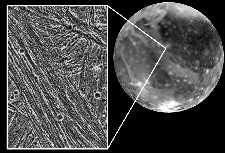This image shows the grooved terrain of Ganymede.
Click on image for full size
NASA
Grooves of Ganymede
Instead of icy-volcanism, the surface of Ganymede reveals a gradual surface deformation remeniscent of the crustal deformation of the Earth. In this case, crustal extension of the surface of Ganymede resulted in big blocks of the crust being pulled apart, as shown in this image. The pulling apart of blocks of crust is similar to the terrestrial process of rifting.
The lack of icy-volcanism, such as that found on Europa, probably stems from a lack of the kind of heating undergone by Europa. The existence of surface extension and deformation suggests that there has been some heating of Ganymede, nonetheless.
You might also be interested in:
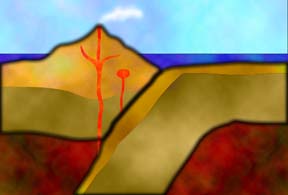
Mountains are built through a general process called "deformation" of the crust of the Earth. One example of deformation comes from the process of subduction. When two sections of the Earth's lithosphere
...more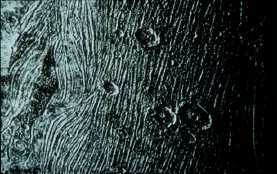
This image shows an example of the grooved terrain of Ganymede. The image clearly shows that some things hit Ganymede and made craters after the grooves were made, because the grooves are underneath the
...more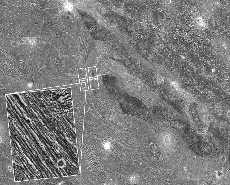
There has been no icy volcanism on Ganymede, but it does seem that there has been a kind of tectonism, or surface motion. Examination of the surface of Ganymede reveals many kinds of faulting and fracture.
...more
Amalthea was discovered by E Barnard in 1872. Of the 17 moons it is the 3rd closest to Jupiter, with a standoff distance of 181,300 km. Amalthea is about the size of a county or small state, and is just
...more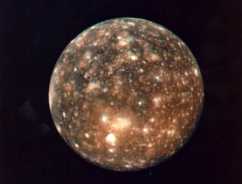
Callisto was first discovered by Galileo in 1610, making it one of the Galilean Satellites. Of the 60 moons it is the 8th closest to Jupiter, with a standoff distance of 1,070,000 km. It is the 2nd largest
...more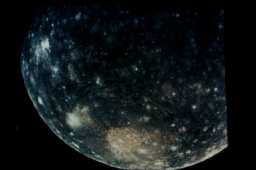
Most of the moons and planets formed by accretion of rocky material and volatiles out of the primitive solar nebula and soon thereafter they differentiated. Measurements by the Galileo spacecraft have
...more
Many examples of the differing types of terrain are shown in this image. In the foreground is a huge impact crater, which extends for almost an entire hemisphere on the surface. This crater may be compared
...more


